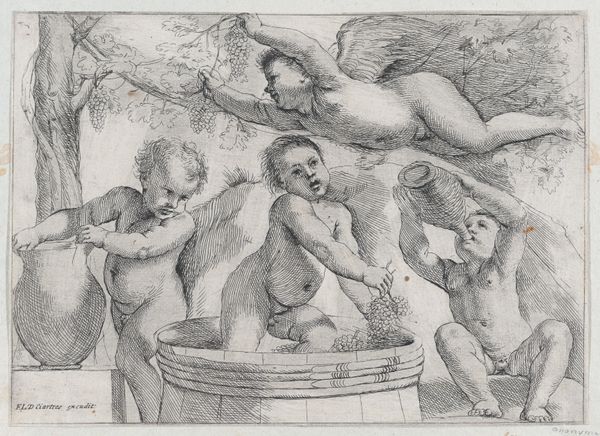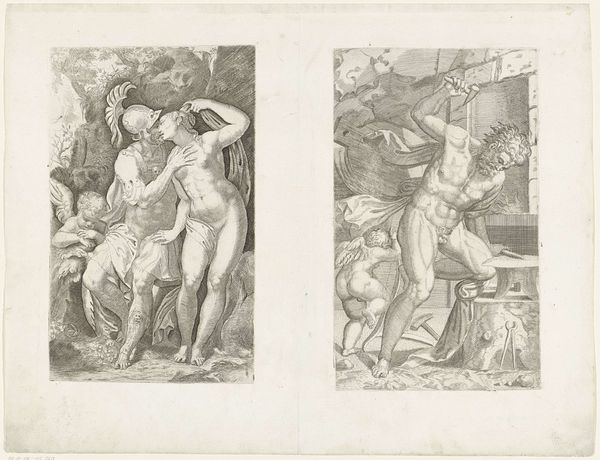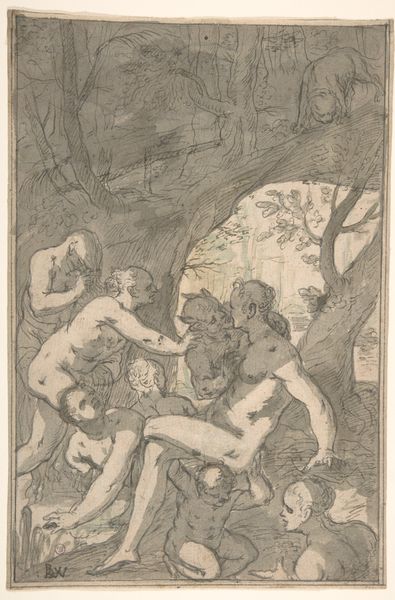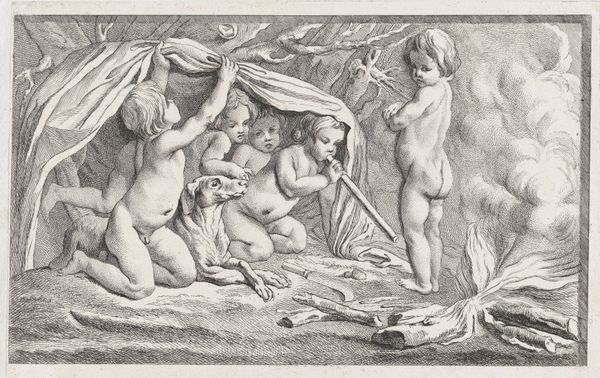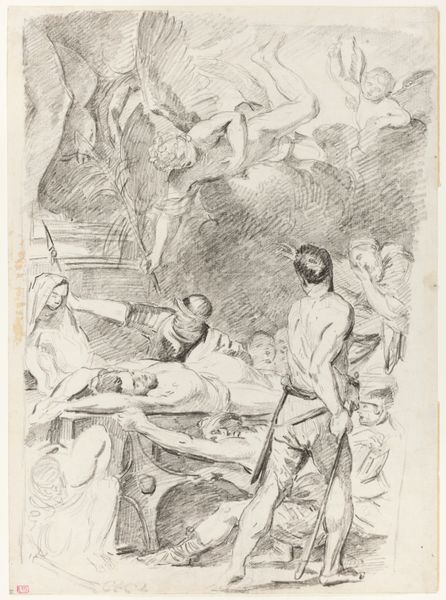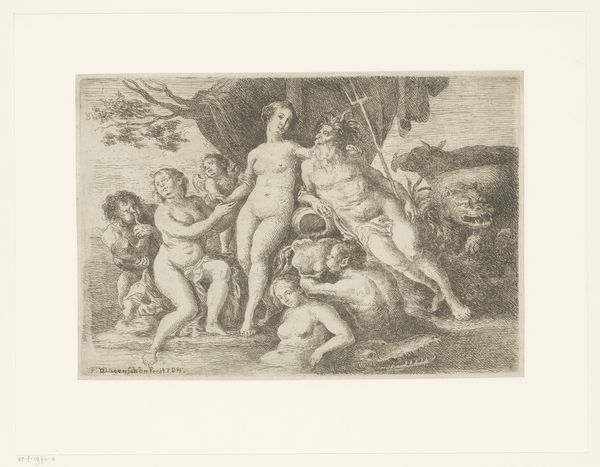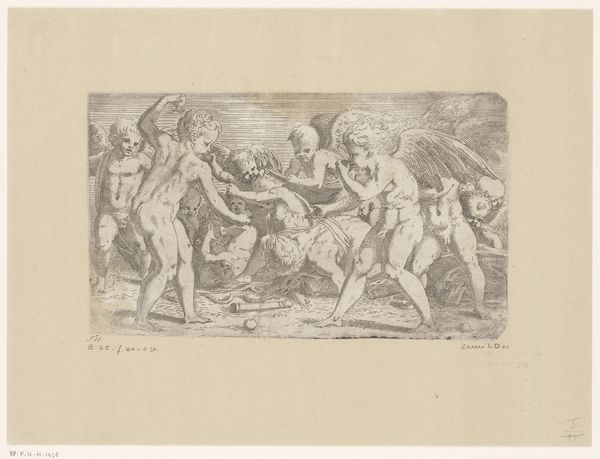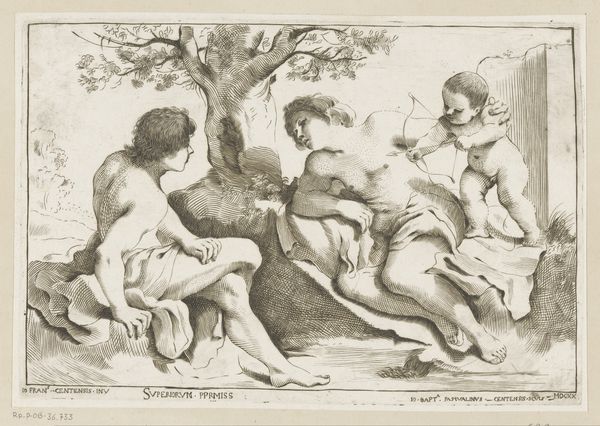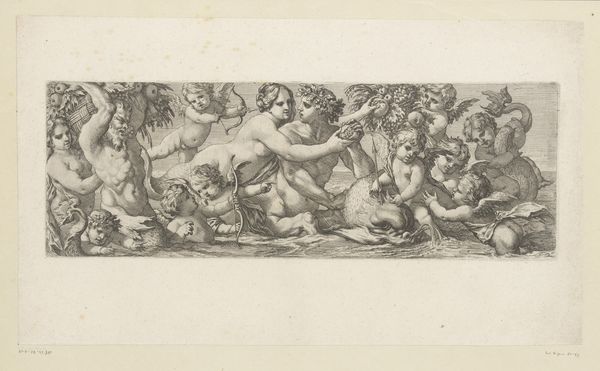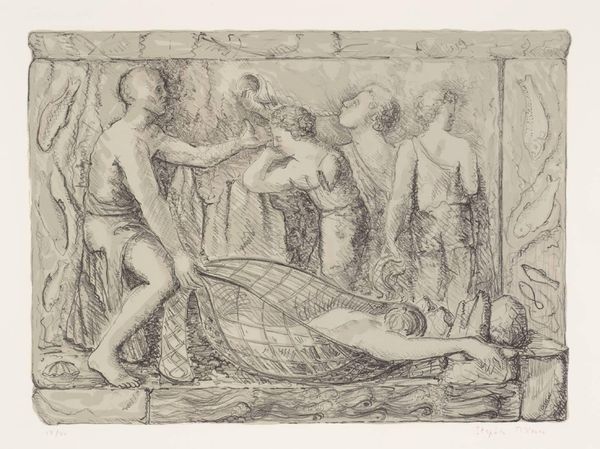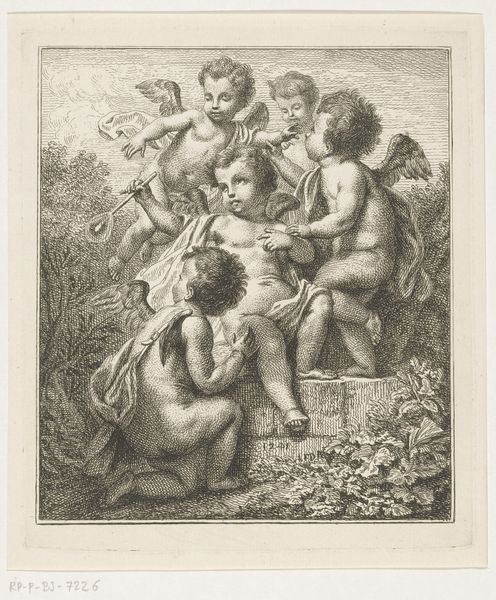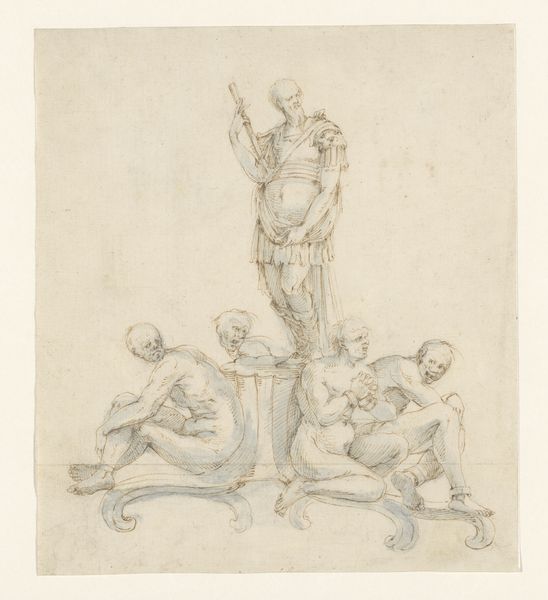
print, engraving
#
baroque
# print
#
landscape
#
figuration
#
engraving
Dimensions: height 203 mm, width 280 mm
Copyright: Rijks Museum: Open Domain
Curator: This engraving, attributed to Girolamo (I) Rossi and dating roughly from 1632 to 1664, is entitled "Putti with Grapevines and Jugs". The scene depicts a group of putti, or cherubic figures, engaged in the harvesting and presumably the preparation of grapes. Editor: The exuberance is palpable! I’m immediately struck by the feeling of abundance and carefree energy; the texture of the engraving enhances this chaotic scene of cherubic labor. Curator: Exactly. It's worth noting that these images were created and circulated during a time when there was a very defined role for certain artistic conventions, and here, we see putti enacting traditionally Bacchic scenes. In the history of art, representations of childhood and innocence are never simply innocent. Consider the history, the politics of visibility around young people and the construction of this ideal. Editor: Right. I’m seeing direct links between these winged figures and much older mythologies, particularly the enduring power of wine. We are also looking at a culture valuing fertility and nature's bounty through symbols of youth. Think about the visual vocabulary being set here for depictions of harvests. Curator: Indeed. Let’s also consider who was producing and consuming art with this particular iconography during the Baroque period and what did these symbols of indulgence represent to the different strata of 17th-century society? And further, whose bodies and labor made the luxuries these cherubs suggest, possible? Editor: These are crucial points about class and access. Despite the carefree mood on the surface, we can uncover a narrative reflecting larger societal inequities using symbolism and its relation to social stratification and to privilege, here portrayed in almost grotesque volume. It almost feels decadent when we put this in that context. Curator: It becomes, in many ways, a symbol for exploitation and extraction by the upper classes that certainly knew no bounds. By reexamining seemingly jovial images with care we might reveal other histories than the simple scene shown to us. Editor: Exactly! Images, symbols, and cultural memory all working to reflect greater societal forces in this simple print, offering more questions than easy answers, even today.
Comments
No comments
Be the first to comment and join the conversation on the ultimate creative platform.
